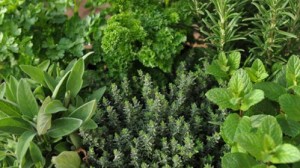↑ Return to Recipes
Herbs

Insect Invasion?
Learn how to Improve your vegetables’ flavor
A Great Hose…
I love my expandable garden hose! It's lightweight and easily moves around the garden with me. It doesn't get kinked or tangled. Hoses can be such a pain, even the ones that say they won't kink. And they are heavy and bulky and bothersome to wind up to make the garden neat. Not this one. Recoiling it is a breeze!
Find this hose here at Amazon.com.
Vinegar Kills Weeds!
Many gardeners report success with regular household vinegar. It has 5% acetic acid and 95% water. But for an even more effective weapon, vinegar with 20% acetic acid is sold as a non-toxic herbicide. I recommend experimenting with diluting the 20% vinegar to make it last longer. University studies say that 10-20% vinegar is effective. Vinegar is a quick-acting, non-selective contact herbicide and its residues degrade promptly in the soil. Foliar contact results in rapid dehydration of annual weeds and grasses, and top growth reduction of herbaceous perennial weeds and grasses. 20% vinegar may be applied up to two days before harvest. Find 20% vinegar here. 20% vinegar is non-food grade and is strong. Read application instructions carefully.
Critter Ridder
Popular Posts
Row cover for cold protection
Floating row cover is a lightweight blanket for your plants. It’s an easy way to extend your growing season. With row cover, your seeds will germinate faster and the plants will get off to a better start. The highest quality of row cover I’ve found is called Agribon. Agribon is made in several different weights. Agribon 19 offers several degrees of frost protection. I have had 12-15 degrees of protection with this product. Agribon 19 also allows 85% of light transmission. This product is for sale at Amazon.


